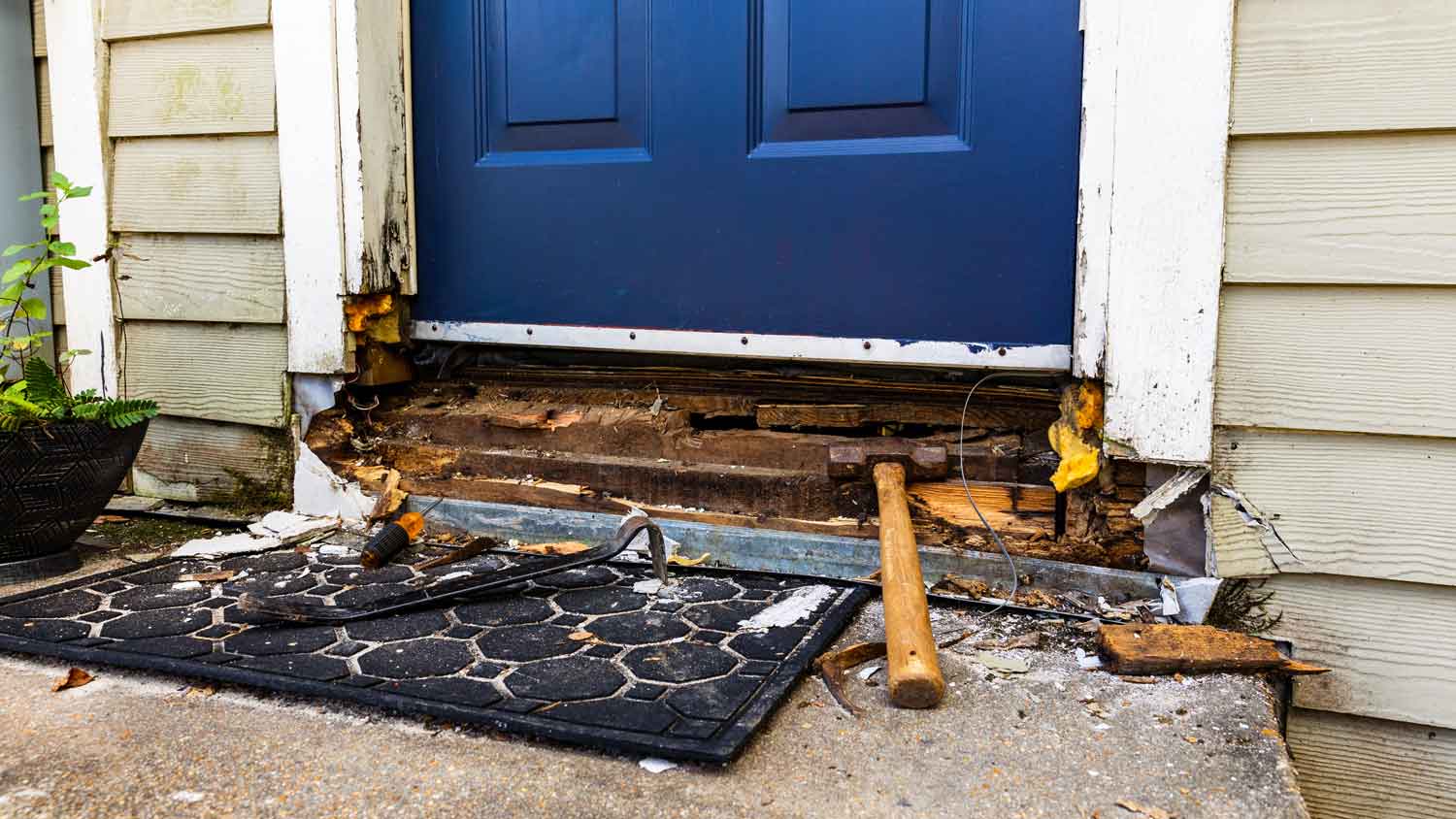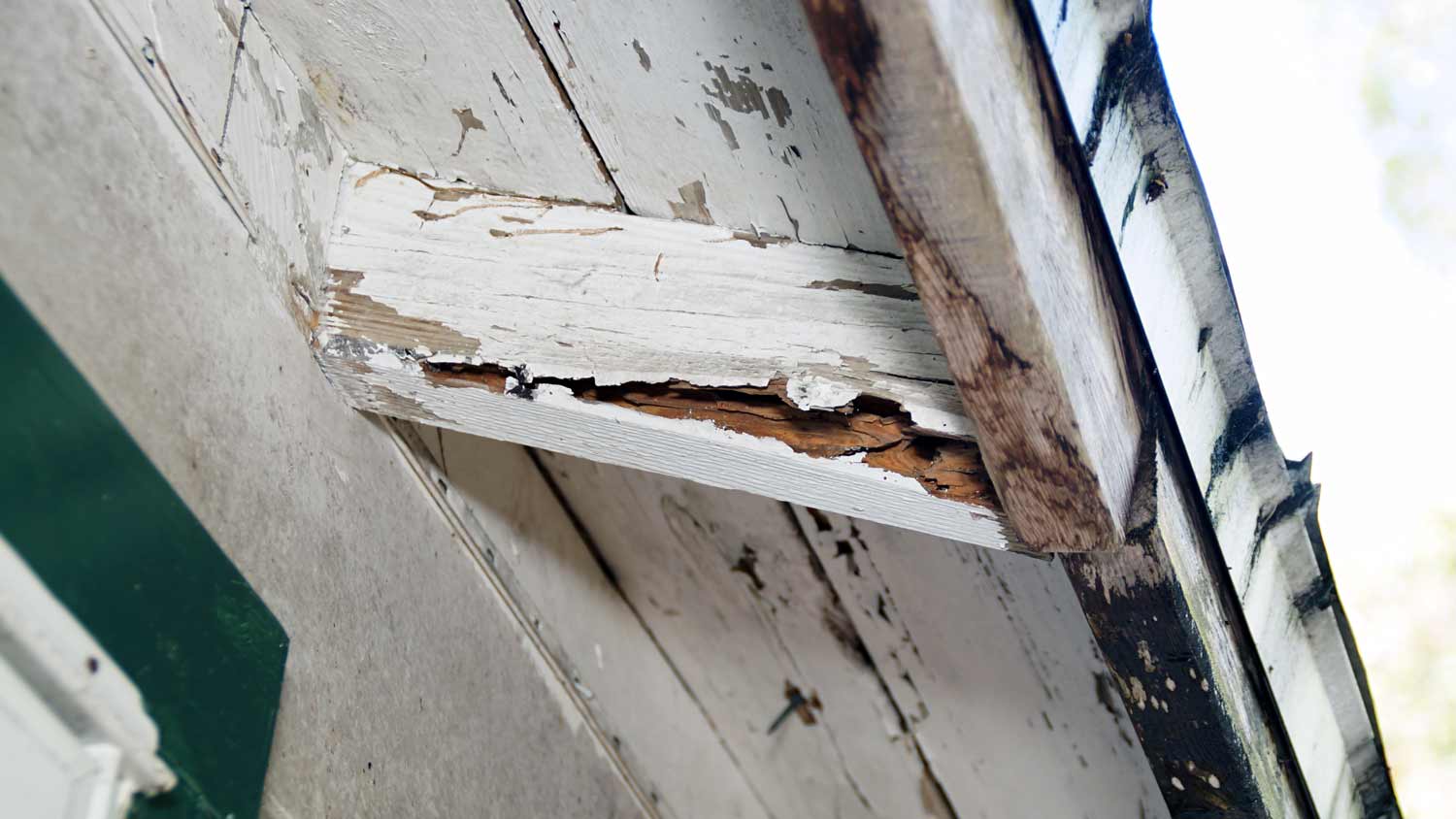How Long Does It Take for Wood to Rot?
Wood you like to know the timeline for this potentially serious problem?


Wood rot can cause serious structural issues and safety hazards.
Rot can take as little as a week to develop and several months or even years to fully damage wood.
You can prevent wood rot by using pressure-treated wood and reducing or eliminating exposure to moisture.
Wood rot can weaken and destroy your home’s structural elements, leading to serious safety risks. Whether it’s dry rot or wet rot, this problem can deteriorate any of the wood in your home over time. Our guide explores how long it takes for wood to rot, what factors affect how fast wood rots, and how to prevent rot from damaging your home’s wooden elements.
What Is Wood Rot?
Wood rot is damage to wood caused by fungal growth. There are two types of wood rot: wet rot and dry rot. Many kinds of fungus can cause wet rot, but dry rot is caused exclusively by a fungus called Serpula lacrymans. Both kinds of rot lead to weakened, deteriorating wood and can spread quickly to nearby wood.
Signs of Wood Rot

Dry rot looks like fluffy white cotton growing on the wood’s surface, often accompanied by patches of orange, brown, or purple growth. Dry rot causes wood to become brittle and flaky as it deteriorates.
Wet rot grows distinct fungal fruiting bodies on the wood and leaves wood spongy, soft, and prone to crumbling when touched. Both kinds of rot require moisture to germinate, but wet rot requires higher moisture levels than dry rot.
How Long Does Wood Take to Rot?
Rot can germinate in as little as seven to ten days after exposure to moisture. Visible signs of damage will develop within a few months, and wood can fully deteriorate in as little as two to three years or as long as a decade, depending on moisture and temperature conditions.
You may be able to prevent rot from spreading if you repair dry rot or wet rot quickly while the damage is still minor. A pro who fixes wood rot can repair or replace rot-damaged wood to keep it from spreading. Dry rot repair costs an average of $1,400, depending on the extent of the damage. If you have minor wood rot damage, a handyperson near you may be able to tackle the job, but for extensive damage, hire a local water damage restoration company.
Factors That Contribute to Wood Rot

Moisture exposure is the primary contributing factor to wood rot, but temperature matters, too—the fungus will grow and spread faster in warmer weather. Whether the wood is treated or not also makes a big difference. Pressure-treated wood can still rot, but it’ll take much longer than untreated wood. Painted or stained and sealed wood will absorb less moisture and is less prone to rot.
How to Prevent Wood Rot
Fortunately, you can prevent wood from rotting with few proactive steps. Mitigating moisture exposure is the most important step to take. Paint or stain and seal wood, ensure drainage is working properly so moisture doesn’t pool on wood, and keep your outdoor wood features like decks and porches clean and sealed. Using pressure-treated wood will help reduce the risk of rot as well.
Frequently Asked Questions
You can stop wood rot in its early stages by fixing the moisture problem that led to it, treating the wood with a fungicide, filling weak spots with an epoxy wood filler, and sealing the wood against future moisture. Depending on the extent of the damage, already rotted wood may need to be replaced if it’s no longer structurally sound.
Wood rot is not normally covered by insurance except in rare cases when it results from a covered event like a burst pipe. Wood rot is categorized as gradual, preventable damage, so most insurance policies won’t pay for claims to repair wood rot damage. Check your policy to find out if wood rot is covered before making a claim.















